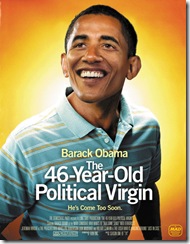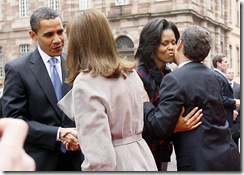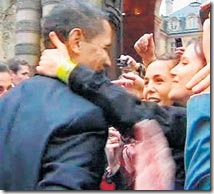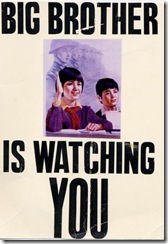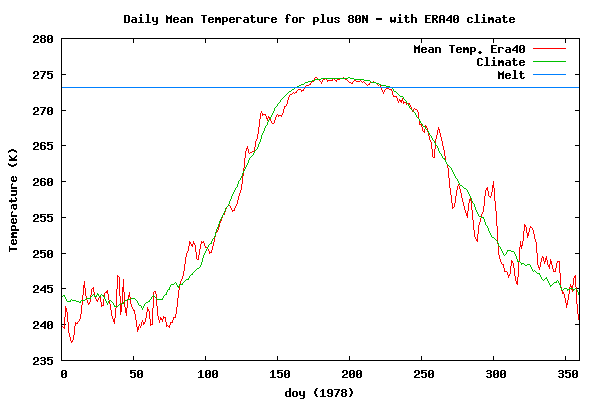Note: With the kind permission of Mr. Card, I am reposting one of his articles on the "Global Warming" disgrace: Sadly, it is just as relevant today.
All clickable links are my additions—not those of Mr. Card.
All in a Good Cause
by Orson Scott Card

This article was originally posted at the
Rhino Times
March 08, 2007
Here's a story you haven't heard, and you should have.
An intelligence source, working for a government agency. He's not a spy, he's an analyst. He uses computers to crunch numbers and at the end of his work, out pops the truth that was hiding in the original data. Let's call him "Mann."
The trouble with Mann is, he has an ideology. He knows what he wants his results to be. And the original numbers aren't giving him that data. So the agency he works for won't be able to persuade people to fight the war he wants to fight.
Well, that's not acceptable.
Cooking the Figures
He starts with his software. There are certain procedures that are normal and accepted in his line of work. But if he makes just one little mistake, his program does a weird little recursion and if there's any data at all that shows the pattern he wants it to show, it will be magnified 139 times, so it far overshadows all the other data.
He can run it on random numbers and it gives him the shape he wants. Unfortunately, the real-world numbers aren't random – they have a very different shape. All the numbers. Even his jimmied program won't give the results he wants.
All he needs is any data shaped the right way. And so he looks a little farther, and ... here it is. It looks, on the surface, like all the other data that he's been working with. Other researchers working in his field, just glancing at it, will assume it is, too.
But it isn't. Because the source that gathered this batch of data had some other key information that takes it all away. The numbers don't mean what they normally mean. In fact, this number set is absolutely false.
If you use these numbers along with all the other data, however, the clever little program will pick them up, magnify them radically and voilá! The final report shows exactly the shape he needs the numbers to have.
The trouble is, these numbers are supposed to be doublechecked. Anybody who looks closely at his numbers and at his program will see what he's done. It's not hard to find, if you have the original data sets and can examine the program. He will be exposed as a fraud. It will do his cause more harm than good, if it's made public.
But he's not afraid. He knows how this works.
He doesn't show the program or the lists of his data sources to anybody.
Second, he is given a big boost by the fact that another researcher – we'll call him "Santer" – had his own ax to grind. He was also the author of a questionable report and got himself appointed to a position that allowed him to get to the final report before it was published, delete all statements about how "there is no way to reach a definitive conclusion," and replace them with his own conclusion, which is absolute.
And it works. Santer's report is accepted, even though it has since been proven false. Mann's report continues to be relied on, and no one questions it. The government agency issues the report which they know has been altered to fit preconceived conclusions.
Vast sums of money are expended on the basis of what he claims to have found. People's lives are put at risk.
Mann and Santer didn't do it for the money, though grants do flow in their direction.
They did it for the cause. It's a noble cause. And even though the data don't actually say what they wanted them to say – in fact, they say the opposite – they are untroubled by that. Because the government actions that are being taken are the Right Thing.
Santer and Mann are true believers. They don't need evidence. Evidence is just something you create to persuade other people.
Here's the amazing thing about Mann's original report: He's not the only researcher working in this field. In fact, it's the job of many hundreds of researchers to refuse to accept his data at face value. After all, his findings disagree with everyone else's. Before they accept his results, they have a duty to look at his software, look at his data and try to duplicate his results.
But nobody does it. Not a soul.
Nor, when it goes public, does anyone in the press check the results – because they want him to be right, too.
Steve the Canadian Businessman
Not until a Canadian businessman – let's call him "Steve" – took a look at the stats and got curious. Now, it happens that Steve is in the mining business; he also happened to be a prize-winning math student in college. He knows how to read number sets. He knows what good analysis looks like.
He also knows what cooked figures look like. He has seen the phony projections that companies use when they're trying to swindle people. Their results are too perfect. Mann's report looks too perfect, too.
So Steve starts digging. First, he reads Mann's original report. He finds it an exercise in obscurity. From what he published, it's very, very hard to tell just what statistical methods Mann used, or even what data he operated on.
This is wrong – it's not supposed to be that way. Scientists are supposed to leave a clear path so other people can follow them up and replicate their research.
The fact that it's so obscure suggests that Mann does not want anyone checking his work.
But Mann used government grants in his research. Which means he has an obligation to disclose. Steve contacts him, asks for the information. He gets a runaround. He gets pointed to a website that does not have the information. He tries again, and again gets a runaround – in fact, Mann sends him a very rude letter saying that he will no longer communicate with him.
Why should he? Steve isn't a legitimate researcher in that field. He's just a businessman.
But Steve is now sure there's something fishy going on, and he doesn't give up. He gets other people to help him. Finally they are pointed to a different website, where, to their surprise, they find that someone has accidentally left a copy of the FORTRAN program that was used to crunch the numbers. It wasn't supposed to be where Steve found it – which is why it hadn't been deleted.
Also, there was a little more carelessness – there is a set of data labeled "censored." Steve can't see, right away, what's significant about it, except that a score or so of data sets are left out of the censored data.
Steve looks at the program. He finds the glitch rather easily. He tries the program on random numbers and realizes that it always yields the distinctive shape that has caused all the stir.
Sorting out the data sets is much harder. He contacts a lot of people. He does what anyone checking these figures would have to do, and he realizes: If anyone had tried to check, a lot of this information would already have been put together.
He realizes: I am the first person ever to attempt to verify these astonishing, anomalous, politically hot results. Out of all the researchers in this field who had a responsibility to do "due diligence" before accepting the data, none of them has done it.
Finally he has all the original data put together. It includes more than just real numbers – it includes "extrapolated" data, which means that sometimes, where there were holes, Mann just made the numbers up and plugged them in. This is sloppy and lazy – but it's just the beginning.
What's crucial is that Steve now understands why the "censored" data sets are smaller than the ones Mann used. The full source data includes those misleading results that shouldn't have been used. But the "censored" data sets leave it out.
This means that Mann knew exactly what he was doing. This was not an accident. Mann ran the program on the data without the misleading numbers, and then he ran it with the misleading numbers. What he published was the results that made his ideological case.
Where's the Press?
This story is true.
Anybody who cares to can verify the story. In fact, one of the leading science journals was prepared to publish Steve's results. But then, before publication, they kept cutting back and cutting back on the amount of space they would let Steve's report take up in the journal.
Finally the space they were going to allot was so small that they concluded Steve could not tell his story in that number of words, and therefore they decided not to publish it at all.
Meanwhile, serious publications did publish Mann's savage response to what Steve was saying on the website where he was putting up his results for everyone to read.
Notice: Steve is making all his work transparent to the world – anyone is free to check his data.
Mann is still hiding, denying, attacking – but not providing the full information. You still have to do detective work to ferret it out.
Now, if you were a reporter – you know, those brave guys and gals who are committed, body and soul, to "the public's right to know" – wouldn't you smell a rat? Wouldn't you jump on the chance to expose such an obvious fraud?
After all, there are now governments all over the world basing their decisions on Mann's false report. Crucial decisions are being made. Schoolchildren are being terrorized with dire projections of what will happen if Mann's report is not believed and acted upon. Vast sums of money are being spent. People are treating Mann's cause as a crusade – and his fake results are the chief weapon they use to prove their case.
Where's the press? Why am I able to tell you this story in full confidence that very few who are reading it will have ever heard it before?
Because Mann doesn't report to the Bush administration. The government agency for which the result was filed was a UN agency – specifically, the Intergovernmental Panel on Climate Change (IPCC).
And Mann's report is the famous "hockey stick" that "proves" that global warming not only is happening, but right now we're in the warmest climate period in the past thousand years.
Ah! You've heard of that report, haven't you! The press has been all over that one! Your kids are being taught about it in school!
You have friends who look at you like an idiot or the scum of the earth if you don't get energized by it, frightened by it, determined to act on that information. Don't you care about the future of the environment?
Why haven't you joined the cause? Why doesn't the Bush administration act to save the world from the most terrible threat imaginable?
It's like the opening of the "Talk of the Town" section of the Feb. 12 New Yorker: "Except in certain benighted precincts – oil-industry-funded Web sites, the Bush White House,
Michael Crichton's den – no one wastes much energy these days trying to deny global warming."
This statement is not just false, it's stupidly false. It speaks of such deep ignorance at The New Yorker – ignorance that they're actually proud of – that it makes one despair, for this is a magazine that once prided itself on knowing what it was talking about.
"By the time the I.P.C.C. publishes an assessment, it has been vetted by thousands of scientists," says The New Yorker – but we know that in fact nobody vetted the Mann paper, and nobody checked Santer except, of course, Santer – while he went ahead and removed statements of some of those "thousands of scientists" (p. 27).
In other words, whoever wrote this New Yorker piece did not check. He or she just spouted.
What is really being said here is, "We believe in the IPCC and anybody else who supports global warming. We believe it so much that we refuse to listen to anybody who says otherwise."
The only difference between this and Jim and Tammy Bakker on the old PTL Club is that nobody says "Jesus." It's all faith, no science.
They're like 4-year-olds putting their fingers in their ears and chanting "La la la la" until the person talking to them goes away.
The Hockey Stick Hoax should be a scandal as big as the discovery of the Piltdown Man Hoax. Bigger, really, since so much more is at stake.
But because the media are dominated by true believers, they are doing everything they can to maintain the hoax, to keep the public from learning the truth.
What were those bad numbers Mann plugged in to get his fake results? Modern bristlecone pine tree-ring data in which recent tree rings showed the widths that would normally mean unusually warm weather.
However, these trees were located near temperature recording stations that showed lower than usual temperatures. So instead of being a sign of warmer temperatures, the tree rings are actually responding to the increased CO2 levels.
Even the heading on this bristlecone pine study clearly stated that the wider tree rings did not indicate higher temperatures. But Mann plugged them in as if they did, producing the one data set that showed "warmer weather" (i.e., wider tree rings) in recent years, allowing the defective software to produce its hockey-stick result.
The bristlecone pine study was real science. Mann's use of it was deliberately fraudulent.
How Can We Know What's True?
All this can be checked. I didn't even change the names. "Mann" is Michael Mann; his co-writers on that hockey stick report are Raymond Bradley and Malcolm Hughes. "Steve" is
Stephen McIntyre, and the writer of the report I'm working from is Ross McKitrick, who is a climate scientist. Their report is a chapter in
Shattered Consensus: The True State of Global Warming, edited by Patrick J. Michaels.
Do you know how true believer scientists respond to this? Just like the ignorant New Yorker writer. There's no attempt to answer any specific charge. They simply dismiss any disagreement by saying, "All the smart scientists agree that global warming is happening; anybody who denies it is just a crank, and you should ignore them."
This is exactly the kind of bias that President Bush's enemies accuse him of having during the run-up to the Iraq War. They claim that Bush and his people only believed the intelligence reports that told them what they wanted to hear, and ignored the rest, claiming that "everybody knew" things that were false.
That's not what happened with Bush (but you don't actually have to prove accusations against President Bush these days). But with the Hockey Stick Hoax it can be proved – yet the very same reporters pay no attention at all. It's "not a story."
In other words, the very people who attack Bush as a liar are actually behaving exactly as they accuse Bush of behaving.
Global Warming vs. Climate Change
If you pay close attention, you'll find that global warming alarmists are not actually saying "global warming" lately. No, nowadays it's "climate change." Do you know why?
Because for the past three years, global temperatures have been falling.
Oops.
The thing is, we've had 20 years since the alarmists first raised the banner of global warming. They told us that "if this goes on" by 2010 or 2020, sea levels will be rising so high that coastal cities will be flooded, famines will cover the earth, and ...
Oh, you know the list. They're still making the same predictions – they just move the dates farther back.
It's like those millennarian religious cults in the 1800s. Religious leaders would arise who would predict the Second Coming of Christ in 1838. When Christ didn't oblige them by showing up, they went back to their visions or scripture calculations or whatever they claimed and report that they miscalculated, now it was going to be 1843. Or whatever.
Here's the raw truth:
All the computer models are wrong. They have not only failed to predict the future, they can't even predict that past.
That is, when you run their software with the data from, say, the 1970s or 1980s, and project what should happen in the 1990s or 2000s, they project results that have absolutely nothing to do with the known climate data for those decades.
In other words, the models don't work. The only way to make them "work" is to take the known results and then fiddle with the software until it finally produces them. That's not how honest science is done.
Why are so many scientists so wrong?
First of all, there aren't all that many scientists. You hear about how "everybody" agrees about global warming. But who is "everybody"?
I had somebody at a conference get very angry with me for even raising a question. "I have a friend who's a climate scientist and he says that the Everglades are definitely drying up!"
But that's not the question, I said. Global warming isn't even the question. The question is, what is causing global warming or cooling or climate change? Is it human carbon dioxide emissions or something else? Your friend is studying aquifers in one specific area. In what way is he qualified to speak about global climate?
The only answer I got was the answer you always get when you challenge the roots of someone's religion – fury, dismay and a refusal to talk about it any more.
That's what happens over and over. Who are the scientists who are qualified to speak? There aren't that many. It's the relatively few scientists who are studying the paleoclimate and those who are working on contemporary data collection and collation and analysis.
And here's where it almost gets funny. Even the IPCC, which was so heavily biased in favor of global warming alarmism, could not get its pet scientists to agree that global warming in recent decades is even probably caused by human activity.
What Is Driving Global Climate?
Science isn't done by consensus. It's done by rigorous testing. When a hypothesis – or a computer model – fails to correspond to the actual real-world data, you throw them out.
That's what the real climate scientists are doing. They have found, in recent years, a very close correspondence between global climate and variations in the amount of radiation the Earth receives from the Sun.
The light and heat we get varies depending on the distance and position of the Earth and the amount of radiation the Sun puts out. The Earth's distance and position seem to determine the big cycles – the ice ages – and the Sun's variations seem to determine the smaller climate cycles.
We have historical data indicating several global warming periods. There was one during the heyday of the Roman Empire; then there was a global cooling during the Dark Ages (beginning about 600 A.D.) The medieval warming kicked in about 950, followed by the Little Ice Age beginning about 1300.
The Little Ice Age ended in about 1860. You'll notice that most reports on our modern global warming set that as their base point, and leave out all prior warmings.
But those warm periods are real, as are the cool periods. Ice core samples from various places around the world back it up, as do ocean floor samples. In fact, the predictions based on the 1,500-year (approximately) solar cycle are borne out everywhere.
There's now at least as much real-world evidence supporting the solar cycle as the cause of climate variation – including all of today's climate variation – than there was for, say, tectonic plates or the asteroid-caused extinctions at the time when they were first plastered all over the media as the hottest science news of their day.
It's not that it's really a secret. The book
Unstoppable Global Warming by Singer and Avery tells us what the media could easily have reported to us:
"On 16 November 2001, the journal
Science published a report on elegant research, done by unimpeachable scientists, giving us the Earth's climate history for the past 32,000 years – along with our climate's linkage to the sun" (p. 8).
They quote Richard Kerr of
Science:
"... the climate of the northern North Atlantic has warmed and cooled nine times in the past 12,000 years in step with the waxing and waning of the sun."
And Kerr quotes glaciologist Richard Alley of Penn State:
"The ... data are sufficiently convincing that [solar variability] is now the leading hypothesis to explain the roughly 1,500-year oscillation of the climate seen since the last ice age, including the Little Ice Age of the 17th century" (p.8).
We're not talking about fly-by-night whackos. We're talking about leading scientists doing solid research.
And other scientists have found data that correlates closely with their findings all over the world. In other words, these solar oscillations account, completely, for the global variations.
The opposite is the case with the global warming alarmists. Their human-emitted carbon dioxide hypothesis is made ludicrous by the fact that most of the warming since the 1860s occurred before 1940, an era when human CO2 emissions were not significant. And we had significant global cooling between then and 1970, precisely the period when CO2 emissions were steeply rising.
CO2 really is rising, though. Any greenhouse heat effect seems to be dissipated by a newly discovered "Pacific heat vent." Moreover, CO2 emissions are probably involved in fertilizing vegetation wherever CO2 levels have risen.
Global Warming "Solutions"
We can't stop global warming or cooling. We simply don't have the power to do it. We can't heat up or cool down the Sun; we can't jiggle the Earth in its orbit or change its position. We'd be idiots to try, even if such unimaginable powers came within our reach.
So we'll continue, as long as the human race persists, to have ice ages and warm periods, with relatively minor oscillations (like the Little Ice Age and our current warm period) in between.
In fact, what we have right now, while we are not yet as warm as the peak of the medieval warming (a fact that Mann and others have tried to deny or obscure), is a superb climate that is making life better for people all over the world. It's the cold periods that cause famines and population drops, and promote plagues and floods.
We should be grateful.
Instead we are being hit with dire warnings, every one of which is either false or a normal part of the Earth's history; our business should be to adapt to the unavoidable solar-caused warming, not to destroy the worldwide economy in order to prevent something that human activity is not causing.
Because the "solutions" proposed by the alarmists do not solve anything – and they admit it! The drastic proscriptions of the Kyoto Protocols, even if anybody were actually following them, would not have had any effect on global warming, even if it had been caused by human CO2 emissions.
Do you understand that? When Al Gore goes on and on about what we must do to save the Earth, he knows – and everybody involved with the global warming alarmist movement knows – that none of their drastic proposals would have the slightest effect on global warming even if it worked the way their fantasies say it does.
So why do they propose it? There are many personal motives, of course, but when you look at the non-solution "solutions" they propose, the pattern is clear: They are not trying to stop global warming. They are trying to punish the Western democracies for being richer than the rest of the world.
There are solutions to that problem (and I believe it is a problem), but they involve stabilizing bad governments, increasing international trade and making unsafe parts of the world safer so they can take part in the global boom.
Not only that, but many of the programs the alarmists advocate are actually needed for completely unrelated reasons. It is a mark of our folly and blindness that we continue to be so ridiculously oil-dependent all these years after the oil embargo of 1973.
For national security, environmental, futuristic and personal-happiness reasons we should be working hard to change our automobile centered culture into more civilized patterns that invariably make people happier wherever they are tried.
It can't be done by cutting back on automobile emissions or even by raising taxes on gasoline – especially because these changes are hardest on the poor and the marginal middle class.
But I'll write about how and why we need to cut back on our destructive love affair with that faithless mistress, the car, in another column.
What matters right here and now is that it is time for the world's scientists to apostatize from the Church of Global Warming. It is a false religion. It is based on lies, and its leading prophets know that it is because they're the ones faking the data or stretching it to ridiculous lengths to pretend that the real world hasn't already ruled against their claims.
It is time for our school systems to stop accepting the gospel of that false religion and start doing their due diligence. Our children should be taught about the demonstrable solar cycles and the whole human-caused global warming theory, along with the Hockey Stick Hoax, should be taught only as another example, after Piltdown Man and pre-Copernican theories of planetary movement, of how science can be corrupted when ideology gets ahead of the data.
It is time for us to laugh at the ideologues who try to pretend that any criticism of global warming alarmism is idiotic and unscientific. They are the ones who ignore the data; they are the ones who believe on faith alone, without evidence; and, most important, they are the ones who are trying to stifle the opposition without answering it.
The global warming alarmists are the anti-science religion that is trying to forcibly indoctrinate and convert everyone while suppressing dissent. And the news media are their patsies, their stooges, their puppets.
Right now, let's start demanding that whenever the local newspaper or TV stations say anything about global warming, they back it up with actual data that takes into account the solar oscillations, the real climate history of the earth, and the facts about what CO2 actually does in the atmosphere.
It's time to stop letting them pass along other people's lies. It's time for the news media to stop doing cocktail party "research" and dig down into the science and get it right.
Read It For Yourselves
I could not possibly array all the evidence here; you must read the books for yourself.
Unstoppable Global Warming is a highly accessible book written for ordinary educated readers. It's the book I recommend most highly.
Shattered Consensus, on the other hand, uses the language of various disciplines of science to a degree that makes some chapters fairly difficult for untrained readers, though the key chapter I cited here, on the Hockey Stick Hoax, is quite readable and worth looking at by everybody.
S. Fred Singer and Dennis T. Avery,
Unstoppable Global Warming: Every 1,500 Years.
Patrick J. Michaels, ed.
Shattered Consensus: The True State of Global Warming.. (See especially: Ross McKitrick, "
The Mann et al. Northern Hemisphere 'Hockey Stick' Climate Index: A Tale of Due Diligence," pp. 20-49.)


